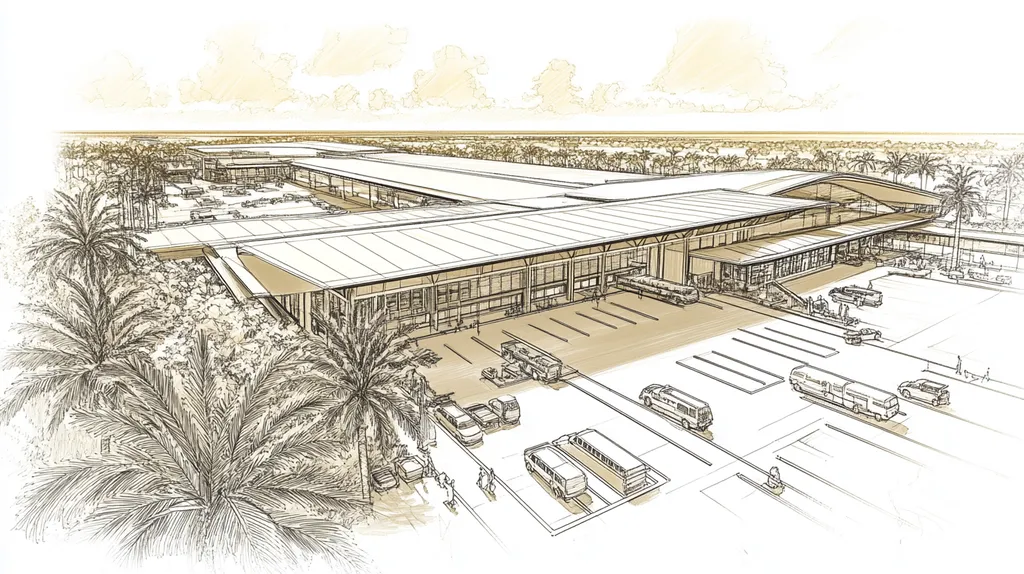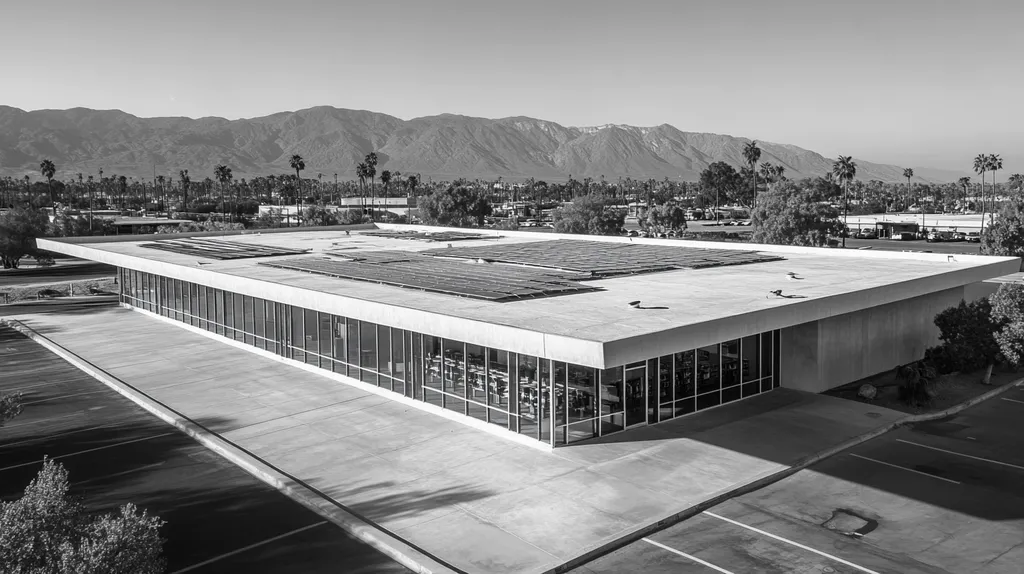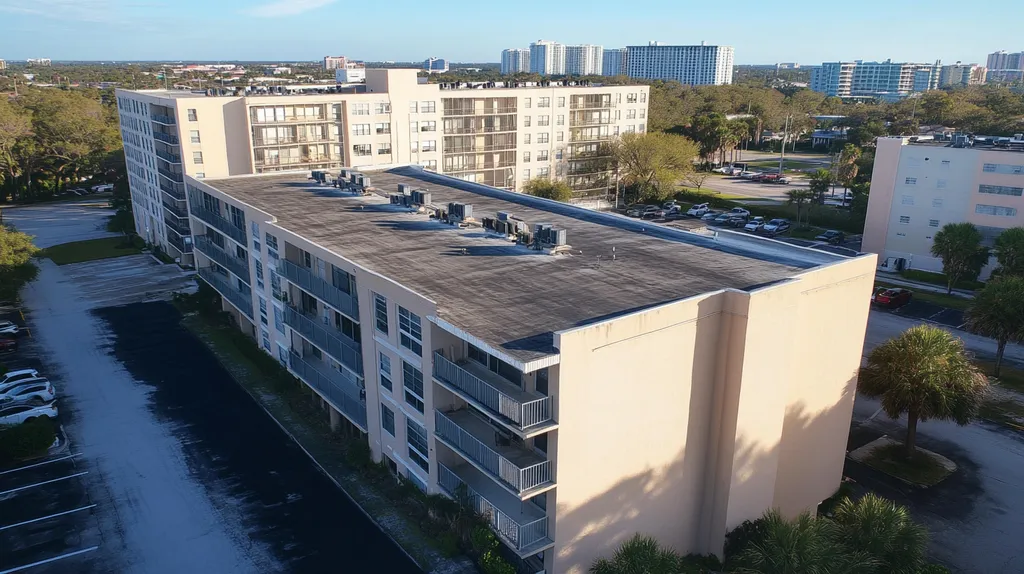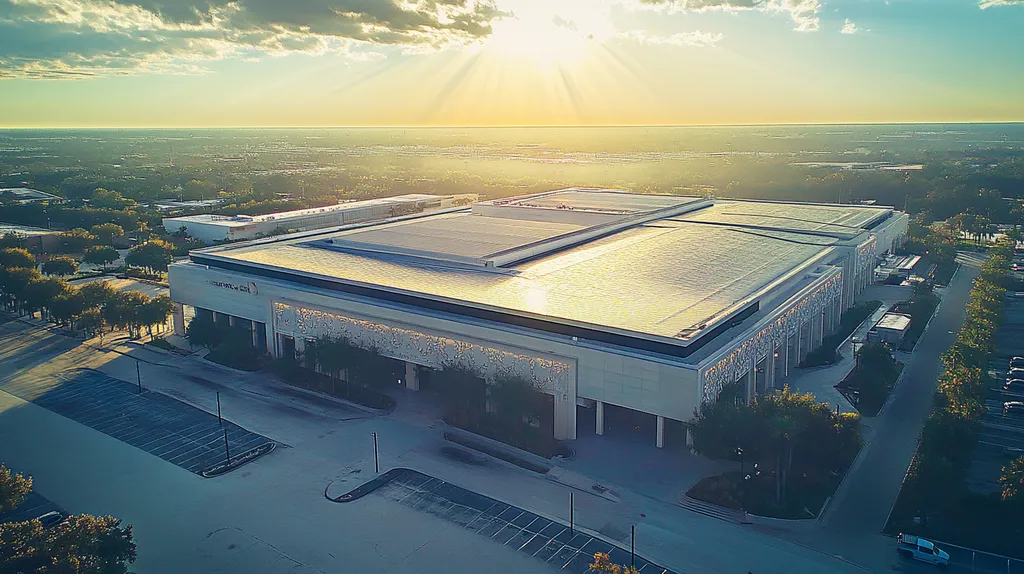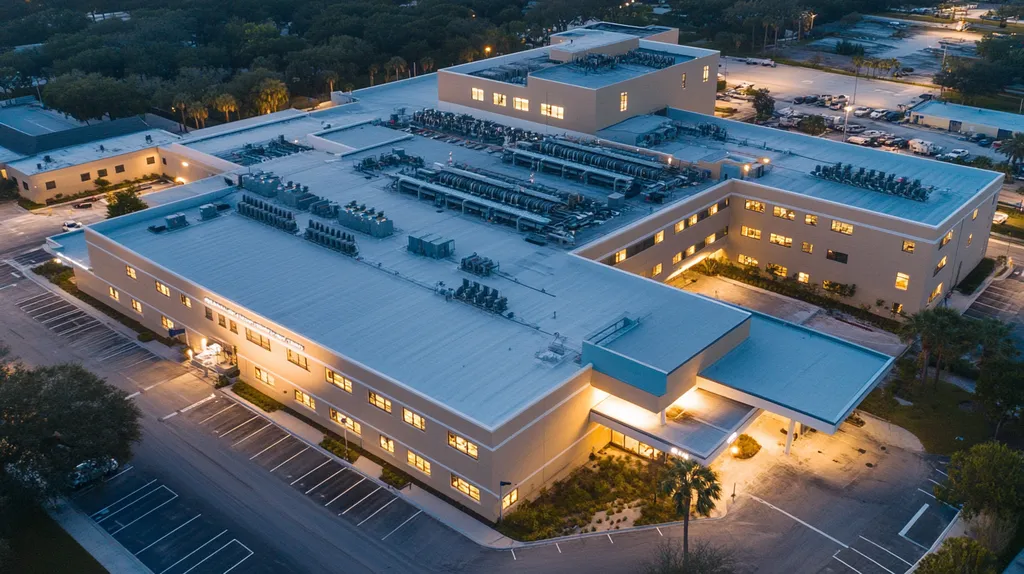Welcome to today’s Battle Royale featuring two roofing heavyweights: “Drone Inspections” in the east corner versus “Traditional Inspections” in the west!
Tonight’s showdown pits these contenders against each other across six punishing rounds designed to test every aspect of their performance for Commercial Roof Damage Inspection.
At stake? Millions in potential costs, decades of building protection, and the critical performance demands of modern commercial and industrial facilities.
Our professional judging panel will evaluate each round on technical merit, real-world performance, and value delivery. After all six rounds, we’ll declare our ultimate champion.
Ladies and gentlemen, facility managers and building owners… it’s time to rumble!
ROUND 1: INITIAL COSTS & INSTALLATION
Commercial roof inspections represent a significant investment that directly impacts building maintenance budgets and operational continuity. With today’s advanced inspection technologies competing against traditional methods, facility managers must carefully weigh the financial implications of their inspection choices. The wrong decision can result in unnecessary expenses, extended downtimes, and compromised roof integrity.
Material Expenses
Traditional roof inspections require substantial equipment investments, including safety harnesses, ladders, staging equipment, and specialized measuring tools. These materials need regular replacement and maintenance, adding to the ongoing costs of conventional inspection methods.
Drone inspections primarily require an initial investment in the drone system and imaging equipment. While this upfront cost may seem significant, the equipment can be used for multiple inspections across various properties without the constant replacement needs of traditional tools.
The drone system’s ability to capture detailed imagery without additional equipment purchases creates substantial cost savings over time. Advanced imaging capabilities eliminate the need for many specialized measurement tools commonly required in traditional inspections.
In terms of material expenses, drone inspections hold a clear ADVANTAGE due to lower long-term costs and reduced equipment requirements.
Installation Complexity
Traditional inspection methods involve complex setup procedures including securing safety lines, establishing fall protection systems, and positioning access equipment. This complexity increases labor hours and requires specialized training for inspection personnel.
Drone systems require minimal setup time, typically involving a pre-flight check and establishing a safe launch area. The primary complexity lies in ensuring proper drone operation certification and compliance with local aviation regulations.
While both methods require trained professionals, drone inspections significantly reduce the physical installation requirements. This streamlined approach minimizes potential safety risks and reduces the complexity of inspection preparations.
Regarding installation complexity, drone inspections demonstrate a clear ADVANTAGE through simplified deployment and reduced setup requirements.
Project Timeline
Traditional roof inspections often span multiple days due to safety setup requirements, weather dependencies, and the methodical nature of manual inspection processes. This extended timeline can disrupt building operations and delay critical maintenance decisions.
Drone inspections can typically complete data collection in a matter of hours, even for large commercial properties. The rapid deployment and comprehensive coverage capabilities dramatically reduce the time required for initial assessment.
The efficiency of drone operations allows for faster identification of problem areas and quicker generation of inspection reports. This accelerated timeline enables facility managers to address maintenance issues more promptly.
For project timeline considerations, drone inspections gain another clear ADVANTAGE through significantly reduced inspection durations.
ROUND 1 WINNER: DRONE INSPECTIONS
ROUND 2: DURABILITY & LIFESPAN
Commercial roof durability directly impacts building protection and operational costs. Studies indicate that proper inspection protocols can extend roof lifespans by up to 40%, while inadequate evaluations often lead to premature failures. Modern facility managers must carefully evaluate how different inspection methods affect their roofing assets’ longevity and performance.
Impact of Inspection Method on Roof Lifespan
Each inspection approach significantly influences how effectively potential problems are identified and addressed. Traditional methods rely heavily on visual assessments, which can miss early warning signs of deterioration in less accessible areas.
Drone inspections utilize advanced imaging technology to capture comprehensive roof data. These systems can detect subtle issues like membrane separations or minor ponding that might escape notice during conventional walkthrough inspections.
Each type of roof inspection requires different focus areas and methodologies. General contractors conducting periodic inspections typically check specific components like fasteners, penetrations, and drainage systems. (source: Procore)
For maximizing roof lifespan through thorough evaluation capabilities, drone inspections demonstrate a clear ADVANTAGE.
Resistance to Environmental Factors
Environmental stress poses constant challenges to roof integrity. Traditional inspections often struggle to fully assess weather-related damage patterns, particularly in areas with limited accessibility.
Drone systems excel at mapping environmental impact across entire roof surfaces. Their aerial perspective reveals patterns of wear, allowing inspectors to identify vulnerable areas before serious damage occurs.
Regular monitoring through drone technology helps track how different sections respond to environmental pressures over time. This systematic approach enables more targeted maintenance strategies.
Regarding environmental impact assessment, drone inspections show another clear ADVANTAGE.
Long-Term Cost and Maintenance Implications
Maintenance strategies directly affect long-term roofing costs. Traditional inspection methods may overlook developing issues, leading to expensive emergency repairs and shortened roof life cycles.
Drone inspections provide detailed documentation that supports proactive maintenance planning. Their comprehensive data collection helps facility managers anticipate and budget for necessary repairs.
The ability to track roof conditions systematically over time reduces unexpected maintenance expenses. This predictive capability allows for more efficient resource allocation and better financial planning.
For long-term cost management, drone inspections earn another clear ADVANTAGE.
ROUND 2 WINNER: DRONE INSPECTIONS
ROUND 3: PERFORMANCE FACTORS
Performance factors in commercial roof inspections directly impact building protection and maintenance costs. Studies show that properly executed inspections can prevent up to 90% of premature roof failures and extend service life by decades. The effectiveness of inspection methods determines not just immediate damage detection but also influences long-term asset preservation and budget planning.
Accuracy of Damage Detection
Contractors conducting traditional inspections must systematically walk the entire roof surface to identify potential issues, checking that installations comply with building plans and manufacturer specifications. (source: Procore)
This manual approach, while thorough, relies heavily on the inspector’s physical access and visual assessment capabilities. Limited visibility in hard-to-reach areas and fatigue during lengthy inspections can compromise accuracy.
Drone inspections utilize high-resolution imaging and thermal sensors to capture comprehensive data across the entire roof surface. These tools detect subtle variations in temperature and moisture that indicate developing problems.
The technological precision and consistent performance of drone systems provide a clear ADVANTAGE in damage detection accuracy.
Speed of Inspection
Traditional inspection methods require extensive preparation time for safety equipment setup and methodical surface examination. This process becomes increasingly time-consuming with larger roof areas or complex architectural features.
Drone systems can rapidly deploy and capture detailed imagery of extensive roof surfaces in a fraction of the time. The efficiency extends beyond data collection to include faster analysis and reporting capabilities.
The dramatic reduction in inspection time minimizes disruption to building operations while maintaining comprehensive coverage. This operational efficiency translates directly to cost savings and faster problem resolution.
For inspection speed and efficiency, drone inspections demonstrate another clear ADVANTAGE.
Potential for Follow-Up and Data Analysis
Traditional inspection documentation typically consists of handwritten notes and basic photography. This format limits the ability to perform detailed comparisons or track subtle changes over time.
Drone inspections generate standardized digital data that enables precise historical comparisons. Advanced imaging technology creates detailed baseline documentation for future reference.
The digital format allows for automated analysis tools to identify developing issues before they become visible problems. This predictive capability supports more effective maintenance planning and resource allocation.
Regarding data analysis and follow-up capabilities, drone inspections secure another clear ADVANTAGE.
ROUND 3 WINNER: DRONE INSPECTIONS
ROUND 4: MAINTENANCE REQUIREMENTS
Effective maintenance requirements directly impact both the longevity and safety of commercial roofing systems. Studies show that properly maintained commercial roofs can last up to 25 years, while poorly maintained ones may fail in less than a decade. Understanding how different inspection methods support maintenance programs is crucial for protecting these valuable assets and preventing catastrophic failures.
Impact on Routine Maintenance
Each type of roof inspection requires specific maintenance protocols and follow-up procedures. General contractors performing traditional inspections must physically examine fasteners, drainage systems, and surface conditions, often requiring multiple site visits to verify repairs. (source: Procore)
Traditional methods necessitate extensive preparation and safety measures for each maintenance check. This complexity often leads to delayed or abbreviated inspections, potentially missing developing issues.
Drone inspections enable quick, comprehensive scans that can be performed more frequently with minimal disruption. Their systematic approach ensures consistent coverage and allows for precise tracking of maintenance needs over time.
For supporting routine maintenance protocols, drone inspections demonstrate a clear ADVANTAGE through increased efficiency and comprehensive coverage.
Documentation and Reporting Systems
Documentation requirements significantly impact maintenance tracking and warranty compliance. Traditional inspection methods typically rely on manual documentation, which can be inconsistent and difficult to reference over time.
These conventional approaches often produce fragmented records that make it challenging to track progressive deterioration or identify patterns of failure. The quality of documentation heavily depends on individual inspector diligence.
Drone systems generate standardized digital records with precise location data and high-resolution imagery. This systematic documentation creates reliable baseline data for tracking changes and planning maintenance interventions.
Regarding documentation capabilities, drone inspections show another clear ADVANTAGE through superior record-keeping and analysis potential.
Long-term Maintenance Planning
Effective maintenance planning requires accurate condition assessment and predictive capabilities. Traditional methods often struggle to provide the comprehensive data needed for strategic planning.
Manual inspections can miss subtle indicators of developing problems, particularly in areas with limited accessibility. This limitation often results in reactive rather than proactive maintenance approaches.
Drone technology enables systematic tracking of roof conditions, supporting data-driven maintenance decisions. Their ability to detect early warning signs allows for more strategic resource allocation and better-planned interventions.
For long-term maintenance planning effectiveness, drone inspections secure another clear ADVANTAGE.
ROUND 4 WINNER: DRONE INSPECTIONS
ROUND 5: SUSTAINABILITY CREDENTIALS
Environmental impact and sustainability have become critical factors in commercial roofing decisions, directly affecting both operational costs and corporate environmental goals. Studies indicate that building maintenance activities account for up to 30% of construction-related waste. The choice between traditional and drone inspection methods can significantly influence a facility’s environmental footprint, resource consumption, and long-term sustainability metrics.
Environmental Impact
Traditional roof inspections require significant physical presence on the roof surface, potentially causing premature wear and material degradation. The process often involves multiple technicians using heavy equipment, which can damage protective coatings and membrane surfaces.
Regular foot traffic during manual inspections creates compression points and wear patterns that may reduce roof longevity. Additionally, traditional methods often require cleaning solvents and repair materials that generate chemical waste.
Drone inspections minimize direct roof contact, eliminating traffic-related wear and reducing the need for repair materials. Their non-invasive approach preserves roof integrity while generating minimal waste products.
For environmental impact considerations, drone inspections demonstrate a clear ADVANTAGE through reduced material waste and roof wear.
Energy Efficiency
Traditional inspection methods typically require extensive equipment operation and extended inspection periods. These prolonged activities often necessitate temporary HVAC adjustments, impacting building energy consumption.
Manual inspections frequently involve multiple site visits and equipment repositioning, each instance requiring additional energy expenditure. The process can disrupt building operations and thermal efficiency.
Drone systems complete comprehensive inspections quickly with minimal energy requirements. Their efficiency reduces operational disruptions and maintains building environmental controls.
Regarding energy efficiency, drone inspections show another clear ADVANTAGE through reduced operational impact.
Long-Term Sustainability Practices
General contractors performing traditional inspections conduct systematic visual assessments of roofing components, often requiring repeated access to verify conditions and track repairs. This approach can lead to increased material replacement and waste generation over time.
Conventional methods may miss early warning signs of deterioration, resulting in larger-scale repairs that consume more resources. The reactive nature of traditional inspections often leads to premature material replacement.
Drone technology enables precise monitoring that supports predictive maintenance strategies. This proactive approach extends material lifespans and reduces replacement frequency, supporting sustainable resource management.
For long-term sustainability practices, drone inspections secure another clear ADVANTAGE.
ROUND 5 WINNER: DRONE INSPECTIONS
ROUND 6: SPECIALIZED APPLICATIONS
Commercial roofing systems face increasingly complex challenges that demand specialized inspection approaches. From multi-level designs to sophisticated equipment installations, modern roofs require thorough evaluation methods to prevent catastrophic failures. Studies show that overlooked damage in specialized roofing applications can lead to repair costs 300% higher than early intervention would require.
Complex Roof Systems
Modern commercial roofs frequently incorporate multiple levels, extensive HVAC systems, and specialized equipment installations that create intricate inspection challenges. Infrared imaging proves most effective during temperature changes, either during morning warming or evening cooling periods, revealing hidden moisture through temperature variations. (source: Procore)
Traditional inspections of complex systems require extensive setup time and often leave hard-to-reach areas inadequately examined. Physical access limitations can force inspectors to make assumptions about concealed conditions, potentially missing critical issues.
Drone systems excel at navigating complex roof layouts, capturing comprehensive data regardless of architectural complexity. Their advanced imaging capabilities provide detailed views of traditionally inaccessible areas while maintaining consistent inspection quality.
For complex roof system inspections, drone technology demonstrates a clear ADVANTAGE through superior access and imaging capabilities.
Emergency Response Assessment
Storm damage, equipment failures, and other emergencies require immediate evaluation to prevent cascading damage throughout building systems. Quick response capabilities directly impact repair costs and insurance claims outcomes.
Traditional inspection methods face significant deployment delays during emergencies, often requiring extensive safety preparations before access. These delays can allow initial damage to worsen, particularly when weather conditions remain threatening.
Drone systems enable rapid deployment and assessment, even in adverse conditions. Their ability to quickly document damage patterns and identify critical failure points accelerates emergency response planning.
In emergency assessment scenarios, drone inspections show another clear ADVANTAGE through rapid deployment and comprehensive documentation.
Preventive Analysis Systems
Effective preventive maintenance requires systematic evaluation approaches that can detect developing issues before they become critical problems. Regular monitoring of key stress points and potential failure zones helps prevent unexpected repairs.
Traditional inspection methods struggle to maintain consistent evaluation standards across multiple preventive maintenance visits. The quality of preventive analysis often varies based on inspector experience and access limitations.
Drone-based preventive analysis provides standardized evaluation protocols and detailed baseline documentation. Their systematic approach ensures thorough coverage of all critical areas while maintaining precise historical records.
For preventive maintenance capabilities, drone inspections earn another clear ADVANTAGE.
ROUND 6 WINNER: DRONE INSPECTIONS
AND THE WINNER IS…
After six grueling rounds of technical evaluation, we have our verdict…
In a stunning unanimous decision, DRONE INSPECTIONS claims the championship belt with a clean sweep across all six rounds! This heavyweight newcomer dominated the competition through superior accuracy, efficiency, and technological innovation.
The champion’s winning combination included faster deployment times, comprehensive digital documentation, and unmatched ability to access complex roof systems without compromising safety or accuracy. Its performance particularly shined in emergency response scenarios and preventive maintenance protocols.
Yet don’t count TRADITIONAL INSPECTIONS out completely. This veteran contender still proves valuable for smaller properties where immediate hands-on verification is crucial, or in situations requiring direct physical testing of roofing materials.
IMPORTANT NOTICE: Every facility faces unique challenges based on location, design, and operational requirements. Local regulations, building codes, and specific property characteristics can significantly impact inspection method effectiveness. This analysis provides general guidance but cannot account for all variables. Always consult qualified roofing professionals who can evaluate your specific situation before making final decisions.
Ladies and gentlemen, whether you choose the high-tech champion or the tested veteran, remember: in the commercial roofing arena, victory goes to those who match their property’s unique requirements with the right inspection strategy’s strengths. Choose wisely – your building’s future depends on it!
FREQUENTLY ASKED QUESTIONS
Q. What are the initial costs of a commercial roof inspection?
A. Traditional inspections involve significant equipment and safety gear costs, along with ongoing maintenance expenses. Drone inspections primarily require an initial investment in the drone system, which can be utilized for multiple inspections across various properties, making these inspections more economical over time.
Q. How does the inspection method impact a commercial roof’s durability?
A. Inspections significantly affect durability by identifying potential issues early. Traditional methods may miss early signs of damage due to limited access, while drone inspections capture comprehensive data that can detect subtle issues, prolonging the lifespan and performance of roofing assets.
Q. What is the speed of inspections for commercial roofs?
A. Traditional inspections can be time-consuming due to the need for extensive safety setups and methodical surface examination. In contrast, drone inspections can be conducted quickly, capturing extensive data in a fraction of the time, minimizing disruptions to building operations.
Q. How do different methods affect routine maintenance for commercial roofs?
A. Traditional inspections require multiple site visits and extensive preparation, often leading to delays. Drone inspections provide quick, comprehensive scans that allow for more frequent evaluations with minimal disruption, ensuring consistent tracking of maintenance needs.
Q. What is the environmental impact of commercial roof inspections?
A. Traditional inspections often cause wear and can lead to chemical waste from repair materials. Drone inspections minimize direct roof contact, preventing damage and generating minimal waste, thereby reducing their environmental impact.
Q. How do drone inspections handle complex roof systems?
A. Modern commercial roofs with intricate designs present challenges for traditional inspections. Drone systems excel by capturing comprehensive data across complex layouts, providing detailed views of hard-to-reach areas and maintaining consistent inspection quality.
Q. Are drone inspections suitable for emergency assessments of commercial roofs?
A. Yes, drone inspections enable rapid deployment and damage documentation during emergencies, making them ideal for quick assessment. This capability accelerates response times and helps mitigate further damage efficiently.

